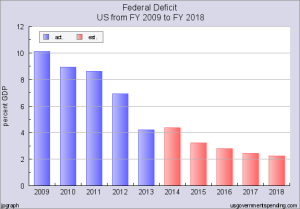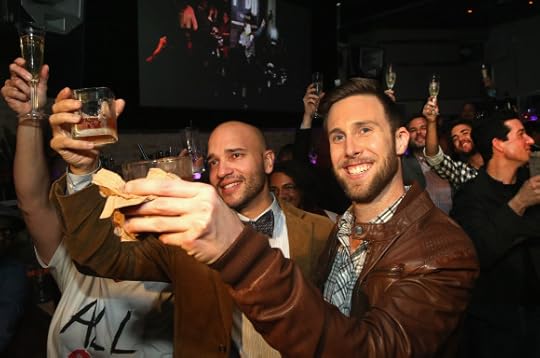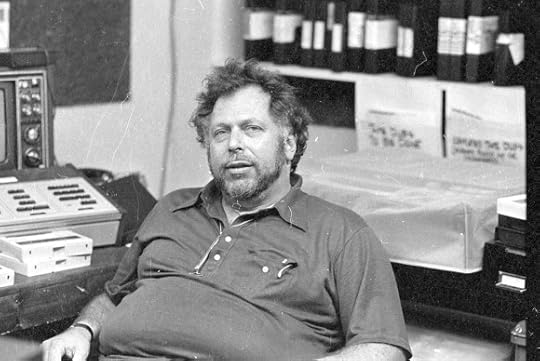Andrew Sullivan's Blog, page 397
December 29, 2013
2013: An Alternative History
Like many a columnist, I was tasked with an end-of-the-year column, and couldn’t really decide what to say. Here’s what I felt: 2013 was one of the most dreary and depressing I can remember. Politically, it seemed scarred by the Republicans’ ever greater extremism and by the Obama administration’s surprising incompetence. Brutal, dispiriting gridlock and the lame embers of an exhausted culture war set the tone for the rest. It was a year in which most of the forces propelling our culture and politics seemed played out: Obama reached his delivery moment, and he was horribly exposed. The GOP had already seen their electoral crisis the year before, and yet they failed to grasp the nettle of immigration reform and, if anything, took pure nullification to newly manic levels in the states and the Congress. No deal on long-term debt; no immigration reform; no serious infrastructure investment; and a horrible roll-out of healthcare reform.
Still, I had no sooner spelled out these core, depressing facts than I kept thinking of the other, less noticed ones. There were, after all, plenty of reasons for be cheerful in 2013. The number of US troops killed in Afghanistan reached a new low of 161, down from 711 three years’ ago. The war in Iraq remained over. Growth accelerated to 4.1 percent in the third quarter and looks set to continue next year. The Dow is now comfortably over 1600 – more than double where it was five years ago, at the trough of the recession. The budget deficit shrank 37 percent in 2013, and was falling faster than at any time since the end of the Second World War. Yes, perhaps the austerity was premature and the big fiscal crisis has yet to hit. But an economy that’s growing and a deficit that’s fast shrinking is a pretty good combo for the time being. For good measure, the US is now in the full throes of a domestic energy revolution and is scheduled to be energy independent by 2020, a goal sought for decades. In part because of this, the US’ position in the Middle East is far less constrained, enabling a potentially world-changing detente with Tehran. Terror attacks – widely  thought after 9/11 as a new norm – have dwindled to negligible levels in the West. Crime perked up a little, but was still way, way down from its past heights, despite the recession.
thought after 9/11 as a new norm – have dwindled to negligible levels in the West. Crime perked up a little, but was still way, way down from its past heights, despite the recession.
And in the US, one huge social shift cemented itself. The last few years have seen a revolution in the way in which gay people are integrated into society. 2013 saw not only the Supreme Court place the federal government firmly behind state-sanctioned gay civil marriages, but democratic legislatures also accelerated the trend across the country. There were many ways in which this titanic year for civil rights could have ended, but civil marriage for gay couples in Utah was pretty damn good. Nine more states now issue marriage licenses for gays than did this time last year – doubling the entire roster in just twelve months. Another, Illinois, will see its first weddings next June. In 2013, England, Wales, Scotland, Brazil, Uruguay, New Zealand, Mexico and France introduced marriage equality. The new Pope, for his part, defused the extremely tense religious and cultural debate by refusing to “judge” a gay person genuinely seeking to follow Christ. By any standards, this was a watershed year for an issue that has vexed humanity for centuries.
And, of course, I mention the Pope. In a few months, he has almost miraculously reasserted Christianity against all the modern “isms” of our time, utterly eviscerated the supreme papacy as envisaged by his two predecessors, and reminded billions of the core and simple message of Jesus. If he has initiated a rebirth of Christianity – as is my devout hope and wish – then this year was a turning point for the world, a moment when hope showed its endurance. And although the Affordable Care Act has gotten off to the rockiest start it could have, it remains a fact that more than nine million Americans have reliable health insurance for the first time in their lives because of it. The graph above was compiled by Amy Fried on Christmas Eve. Many more applied for insurance in the following week. But the point is: these policies will be very hard to take away. I may be wrong, but I’d say the odds are solid that 2013 will eventually be seen not as a triumph for any system of medical care, but as the moment when everyone got into the same, insured boat, and we began to figure out how seriously to control costs.
 It was also the year in which the post-9/11 security state was put back on its heels. I have deeply mixed feelings about what Edward Snowden did, and deep misgivings about the utopian idea that governments should exist with no secrecy. But it is hard not to observe that, as the president’s own commission has found, the US government was doing far, far more snooping than any of us realized, that much of it is of extremely dubious value in foiling terror plots and can be highly counter-productive in the conduct of foreign policy. It felt to me as if a tide had turned. Without Snowden? Not so much.
It was also the year in which the post-9/11 security state was put back on its heels. I have deeply mixed feelings about what Edward Snowden did, and deep misgivings about the utopian idea that governments should exist with no secrecy. But it is hard not to observe that, as the president’s own commission has found, the US government was doing far, far more snooping than any of us realized, that much of it is of extremely dubious value in foiling terror plots and can be highly counter-productive in the conduct of foreign policy. It felt to me as if a tide had turned. Without Snowden? Not so much.
I’d also argue that October’s simultaneous humbling of the president and exposure of the GOP leadership was a deeply salutary thing. The president needs to understand that he has to get one domestic policy right in the next three years and that’s the implementation of the ACA. Nothing else compares in importance. If the debacle of October means a leaner, more focused domestic agenda from the White House in 2014, focused on executive branch delivery and not partisan politics, then it will have been worth it. (The speed with which the website was fixed certainly gives some confidence.) As for the GOP, the Ryan deal and Boehner’s new disdain for the Tea Party suggest some mild movement back to sanity. It’s too soon to celebrate. But it is no longer crazy to hope.
So count me a revisionist. Everything on the surface this past year was horrible; but the tectonic shifts from below were anything but. We’ll see what lasts. But it helps not to forget what recedes ever so slightly from our news-cycle horizon.
Know hope. Or perhaps that requires reformulation.
Know pope.
(Photo: gay men in a bar in Chicago celebrate the dawn of marriage equality in Illinois. By Getty Images.)



A Visionary Artist After The Fact
Reviewing a documentary about Vivian Maier, the 20th-century Chicago street photographer whose work was only discovered after her death in 2009, Noah Berlatsky questions Maier’s posthumous incorporation into the institutional art world:
“People identify with her; they love the story, and then they love the work,” gallery owner Steven Kasher says in The Vivian Maier Mystery, and Kasher’s formulation— “they love the story, and then they love the work”—can mean that buyers love both story and work. But it might also mean that they love the story first, and then love the work because of the story. If that’s the case, people may be paying thousands of dollars not for a particularly striking composition, but for a chance to be part of Maier’s odd narrative—to participate in the story of the secret, humble genius, now revealed. …
My discomfort with the way Maier’s work is presented and used in the film and the art world is in no way a condemnation of the artist herself. She, after all, had no part in her own marketing, and certainly never planned for her images to be seen or lauded. The voice-over towards the end of the film insists that “her compulsion to take pictures was her life,” but that’s the film’s assessment, not hers. It’s a story the film has imposed upon her, for its own purposes. Watching the movie, you get the uncomfortable feeling that a whole lot of people want Vivian Maier’s life to be her pictures so that, in owning or looking at them, both can be consumed.



The Anti-Carb Dogmatist
Dr. David Perlmutter rails against carbs:
The neurologist and president of the Perlmutter Health Center in Naples, Fla., believes all carbs, including highly touted whole grains, are devastating to our brains. He claims we must make major changes in our eating habits as a society to ward off terrifying increases in Alzheimer’s disease and dementia rates.
After reading Perlmutter’s best-selling book on the manifold evils of carbohydrates, and after talking with supporters and critics of the Paleo diet in the medical community, James Hamblin comes away unconvinced by the anti-gluten crusader:
Even as someone who was seriously skeptical of Perlmutter’s story, after reading his 336 pages—and watching his whole YouTube channel and most every TV appearance—I have found myself hesitating around grain. His message is so ardently and unwaveringly delivered. That is how one-sided pop-science works, though. [Dr. David] Katz wrote a tongue-in-cheek case that the 1974 advent of the Post-it note was the cause of the obesity pandemic, to show how easily correlations can be spun. If I read 336 pages on the evils of Post-its, I might set our office supply room on fire. …
When a person advocates radical change on the order of eliminating one of the three macronutrient groups from our diets, the burden of proof on them should be enormous. Everything you know is not wrong. Perlmutter has interesting ideas that I would love to believe. I’d love it if a diet could deliver all that he promises. There is value in belief. It’s what the Empowering Neurologist literally markets. His narrative comes with the certainty that you are doing something to save yourself from cognitive decline and mental illness, which is probably the most unsettling of disease prospects. With that belief also comes guilt; an idea that something could’ve been done to prevent a mental illness, when in fact it was bigger than us. To think that every time you eat any kind of carb or gluten, you are putting your mental health and cognitive faculties at risk is, to me, less empowering than paralyzing.



The Birth Of Creativity
In an interview, the painter Kathryn Lynch describes how having children has impacted her art:
Children grow you. Painting is responding to life and being a mother expands who you are and what you respond to. If you make more life rub up against you, you have more of a world to make art from. I like what Charlie Parker says: “If you don’t live it, it won’t come out of your horn.” I feel like my paintings are better and bigger because of my children. You respond to whatever is in your life, and the people you have in your life feed your painting. Perhaps I am painting my children. I think I am putting everything and everyone I know in my work.
Because I saw myself first and foremost as an artist, I never thought I wanted children. The desire to be a mother came out of the blue at age thirty-six. Perhaps that I paint makes me more animal than intellect.
The two fastest paintings I ever did, and which I felt were some of my strongest paintings, were done two weeks after each child was born. My children brought out my lioness. When I went to paint after giving birth, it was easy to give birth to a painting, the paint just knew where to put itself on the canvas. In those moments I realized that my painting, and my ability to paint, was very directly related to events and occurrences in my life.
(Image: Mother and Child by Kathryn Lynch. For more of her work, visit her website here. Her painting will be featured at the Metro Show in January 2014)



The Least Of My Brethren
Quote For The Day
“Your average pediatric urologist probably spends about 20 percent of his or her time repairing children who have been circumcised,” – attorney David Llewellyn, representing a family whose son had his penis severed by a still-practicing mohel in a botched ceremony of infant genital mutilation.



How Nostalgia Helps Us
Nicholas Hune-Brown looks into research on the sentimental sensibility:
[A] study by Krystine Irene Batcho in The American Journal of Psychology examined the ways in which the nostalgia-prone cope with difficult situations. Batcho tested undergraduate subjects to see how predisposed to nostalgia they were before presenting them with a survey designed to see how they would react to stressful scenarios.
Batcho found that the nostalgia-prone were more likely to cope using helpful strategies, rather than dysfunctional ones. Counteracting the stereotype, the nostalgia-prone didn’t withdraw or go into denial: they sought social support and expressed emotions. The nostalgic had a deeper sense of connectedness to the past, and reflecting on earlier times could bring to mind coping strategies they had used before. Nostalgia proneness, Batcho concluded, came with real emotional and social benefits.



Mental Health Break
December 28, 2013
Loving And Loathing Love Actually, Ctd
Many readers sound off on the polarizing film:
Love Actually is interesting because it is a story about the different aspects of love, not just romance. New love (Jack and Just Judy). Old love in a rut (Emma Thompson and Alan Rickman). Unadulterated lust (Collin). A parent’s love, as well as love for and duty to a deceased partner (Liam Neeson). Siblings (Laura Linney). Unrequited love (Mark and Juliet). Love between friends (Billy Mack). Love with obstacles (Jamie and Aurela). Love you try to deny but can’t (HG and Natalie). I really like the fact that it isn’t a traditional love story.
Relating to the point of work required for a relationship, while Liam Neeson’s character displays this in the care and devotion he shows the son of his departed wife, it was best illustrated by a storyline left on the cutting room floor. In the deleted scenes, there is a story about the principal of the posh elementary school where Emma Thompson’s children are enrolled. The principal has her own love story, providing hospice care to her beloved longtime partner, and dealing with the grief over her loss.
Another reader:
The rabid fans of Love Actually I know are all chronically, unhappily single. I know some coupled folks and happy singles who like the movie well enough. But it is the unhappy singles who spontaneously post their adoration of the movie on Facebook or will at the slightest provocation tell you their favorite scenes in great detail. Far be it from me to suggest that the inability of these people to form the sort of meaningful relationship they so desire and the movie’s unrealistic portrayal of how love is found, won, built and sustained is anything more than sheer coincidence.
Another:
It certainly isn’t a how-to for romance. Some of the relationships are entirely inappropriate. No one recommends buying an expensive piece of jewelry for a flirtatious coworker instead of your wife or declaring your love to your best friend’s new wife.
But I think the central running theme here is about allowing your heart to run and giving up self-censorship.
That’s the fundamental romanticism of the film. And like all romanticism it’s not realistic; it’s emotional. The one character who doesn’t release her self-censorship (Laura Linney) misses her chance. The others get the chance to at least express their emotions, which is refreshing in an emotionally stilted culture. I like the movie and I will probably watch it again in the next week, not because I need pointers on how to cheat on my wife, but because I want to enter into the emotion that causes these people to do profoundly stupid things.
Another:
I just love the movie and find it to be an uplifting peon to love and the yearning for connection. It seems to me that this movie displays how the world does look to someone who is actually in love, particularly in the first flush of romance. When in love, we see mostly good and as love matures, we are given the opportunity to work with the difficult as well as the easy. This film does display some of the challenges that may occur in relationships, as reflected in the characters played by Emma Thompson and Alan Rickman, and what happens after the death of a loved one for Liam Neeson’s character. Also we have Laura Linney’s character, her mentally ill brother, and her delicious co-worker, as another representation of love and yearning for connection but involving difficult choices.
One more point. I find this movie especially interesting because it displays the pursuit of love mostly from a male point of view, one not often portrayed in films. I do think that this film can be unsettling to some men since it does reveal that most men do have a deep sensitivity to love and a desire for real connection with someone, whether the preference be female or male. This deep sensitivity carries with it an anxiety about potential rejection from the desired individual and, as revealed in this film, guys are as vulnerable to this as women are. But most films do not display that aspect in men’s lives. And most men have been culturally trained to not let this vulnerability show. It is not macho.
So I would recommend that people just “lighten up” and try to balance joy with all of the intellectual analyses of this film. This film presents us with a beautiful invitation to get out of our head and into our heart.
Another points to the above scene:
“The Anti-Hef”
That’s what Will Sloan calls the creator of Screw magazine, Al Goldstein, who died earlier this month:
Goldstein launched Screw, his “weekly sex review” of New York, in 1968. United States courts were regularly redefining what constituted obscenity and what passed for “redeeming social value,” but from the beginning, Goldstein said, “a hard-on is its own redeeming social value.” Unlike Playboy, the publication to which Screw stood in contrast, there was no attempt to flatter the reader’s sense of sophistication, or to depict sex as anything but a physical act. “The word love is alien to us,” said Goldstein in his 1974 Playboy interview. “Who needs love? Yuck! We deal with masturbation, the most common sex activity for most people, in graphic words and pictures.” …
Playboy had the debonair, sophisticated WASP Hefner; Screw had the obese, crass, and very ethnic Goldstein. Hefner often shot the early Playboy pictorials himself, leaving articles of his clothing in the background to hint that he’d seduced the women; Goldstein admitted (or perhaps bragged) that he could rarely get laid unless he paid for it. Hefner lived a lifestyle that his magazine urged readers to strive for; Goldstein was proudly in the muck with the rest of us. Screw gained enough counterculture credibility in the late ’60s and early ’70s to score interviews with Henry Miller, Salvador Dali, and John and Yoko (during their Montreal bed-in), but Goldstein was the kind of interviewer who could bring anyone down to his level. He got Jack Nicholson to admit he used the magazine to masturbate.
(Photo via Wikimedia Commons)



Andrew Sullivan's Blog
- Andrew Sullivan's profile
- 154 followers









